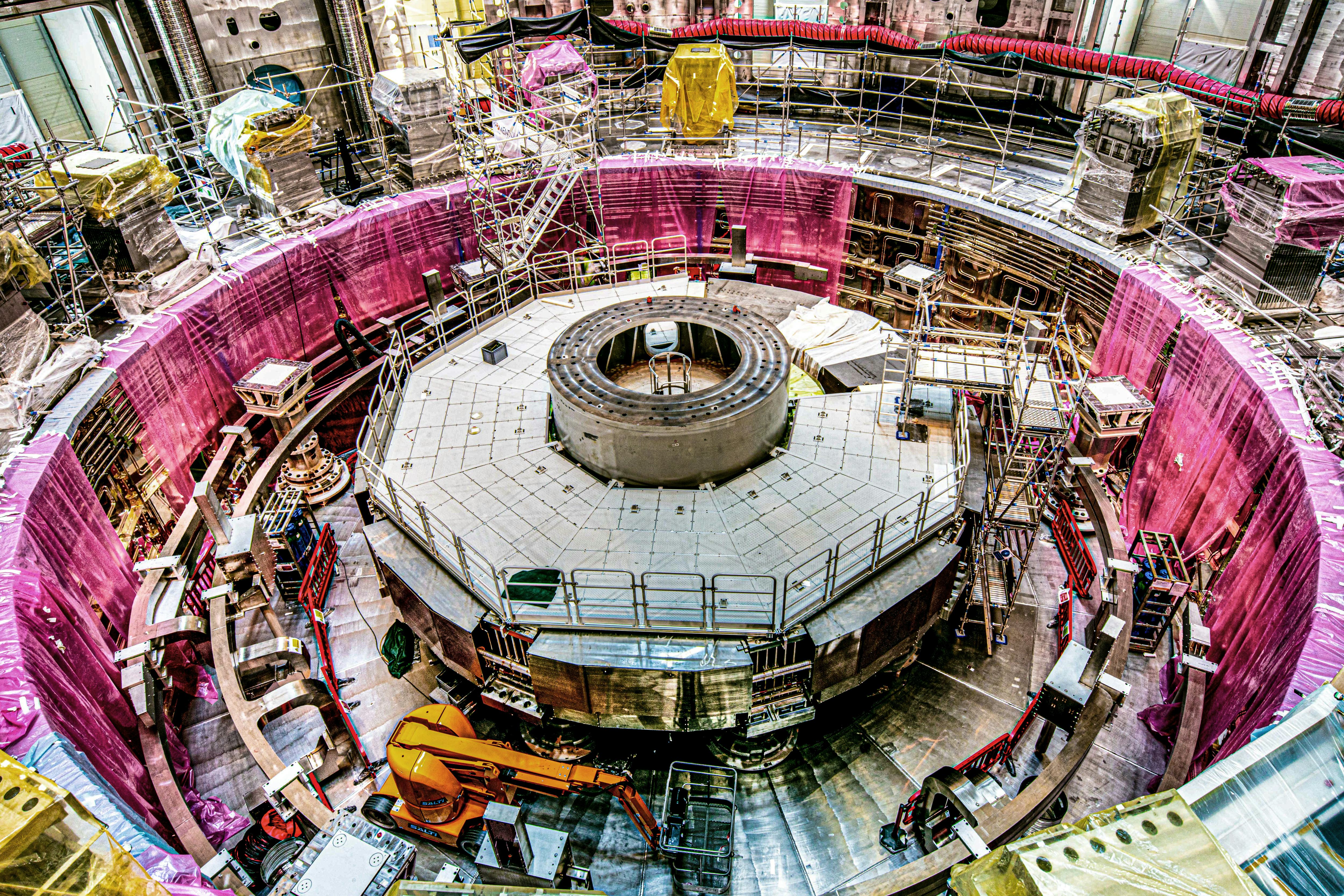
Nuclear fusion reactors could eventually harness the power of the sun to generate massive amounts of clean energy. But for now, they’re prone to instabilities that can wreak havoc on the futuristic machines.
Now, in a new study published in the journal Physical Review Letters, scientists have found a possible way to avoid these destructive instabilities — purposefully cooking up a bunch of smaller ones.
Here’s the background — Nuclear fusion, the same reaction that occurs in the heart of stars, combines atomic nuclei to form heavier nuclei. Any mass that doesn’t make it into new atoms is converted to energy, releasing an extraordinary amount of light and heat.
Scientists have long sought to produce nuclear fusion in reactors on Earth because it generates far more energy than burning fossil fuels does. For example, a pineapple-size amount of hydrogen atoms offers as much energy as 10,000 tons of coal.

Most experimental fusion reactors employ a donut-shaped Russian design called a tokamak. These designs use powerful magnetic fields to confine a cloud of plasma, or ionized gas, at extremely high temperatures — high enough for atoms to merge together.
But all magnetically confined plasmas naturally develop instabilities, or areas where small disturbances in the plasmas quickly grow.
Instabilities that originate at the edge of the ring of plasma in a tokamak called "edge-localized modes" (ELMs) are somewhat like solar flares on the surface of the sun. Each can expel up to 20 percent of the energy stored in the reactor, potentially inflicting catastrophic damage to a tokamak's walls.
Previous research suggested a potential fix: slightly contorting the plasma ring with magnets so that it forms a shape that looks a bit like a rounded triangle.
This step can expand the donut’s more stable interior and render the overall plasma more stable, says Georg Harrer, a lead study author and plasma physicist at the Vienna University of Technology in Austria.
Past studies have also found that fueling the ring with gas offers a density and pressure boost at the very edge of the plasma. This triggers many tiny ELMS instead of major, damaging ones.
But scientists thought such a scenario was only possible in relatively small tokamaks, and not in the large ones currently under development to research fusion power.

What’s new — This new work upends that theory. Through a series of experiments and simulations, the researchers suggest that creating small instabilities may prevent bigger ones in fusion reactors.
While researchers have previously manipulated small instabilities in the lab, they weren’t previously considered a tool for fusion reactors, says Saskia Mordijck, a plasma physicist at the College of William & Mary who wasn’t involved in the new research.
But the recent study does consider that possibility.
You can compare a tokamak to a pot with boiling water and a tight lid on top, Harrer says. Just as a pot’s lid rattles with building pressure, large ELMs bang on the tokamak as pressure grows.
But scientists can offer a pressure release, just as you can tilt a pot’s lid to let out steam: If the tokamak is subjected to many small bursts of pressure, it could experience less damage.
This strategy generates several thousand small instabilities per second. It’s still unclear whether these small bursts help protect the tokamak, but "we have good reason to think that they are way less harmful," Harrer says.
Such outbursts disseminate heat over a much larger area and over a longer period of time, which hopefully spares the tokamak interior from significant melting. What’s more, this approach shouldn’t significantly alter a fusion reactor’s efficiency, he adds.

Why it matters — This technique could be applied in reactors like the International Thermonuclear Experimental Reactor (ITER) project, which aims to create the world's first nuclear fusion plant.
ITER is currently under construction in southern France. When it’s up and running, it could produce 10 times the energy that scientists put into it.
What’s next — Future research will test this strategy on the world’s largest operating tokamak, the Joint European Torus (JET) in England, according to Harrer. JET is currently running experiments that could help pave the way for the International Thermonuclear Experimental Reactor.
"It is a challenge to predict how a fusion reactor will behave at this point," Mordijck says. "The region the authors are studying is notoriously a challenge for multiple reasons, and this is the region that will be the most altered in a fusion reactor."
All in all, this new work "is but a small puzzle piece in a very complex problem," Harrer cautions. "As of now, people should not expect to get their electricity from a fusion reactor before the 2050s."







